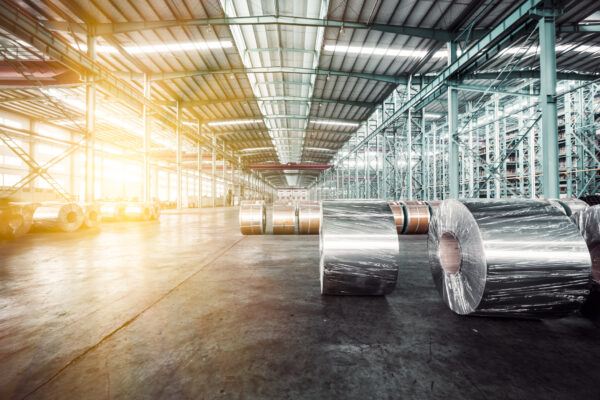 As WorldAutoSteel’s new Director, Ingo Olschewski shares his perspective on the future of automotive steel, from electrification and sustainability to the opportunities shaping tomorrow’s mobility.
As WorldAutoSteel’s new Director, Ingo Olschewski shares his perspective on the future of automotive steel, from electrification and sustainability to the opportunities shaping tomorrow’s mobility.
What do you think are the greatest opportunities for automotive steel, both in the near and long-term?
I’m extremely excited about the future of automotive steel – we see opportunities in many areas both now and as we look ahead, including the advancement of electric mobility; achieving sustainability goals for carbon neutrality and recycling, and meeting regulatory demands for emissions, safety and crashworthiness.
As the mobility sector continues to evolve in the near-term – particularly in the electrification space – we can expect to see greater use of Advanced- and Ultra-High Strength Steels in these vehicle structural components to further reduce weight while ensuring safety.
In the area of sustainability, OEMs and regulators continue to drive forward the message that the production of steel must utilize lower emissions. This makes the use of green steel a differentiating factor for all vehicle segments. When combined with manufacturing improvements such as better forming, improved joining, reduced scrap, leaner supply chains and digitalization, this will enable both complexity reduction and cost-optimization for automakers.
Finally, longer-term, new use-cases like autonomous vehicles and ride-sharing fleets will also shift automotive design priorities. This is an additional area where steel can provide durability and safety solutions while designing for modularity, repairability or fleet serviceability.
What do you see as the biggest challenges facing automotive steel in the era of electrification and sustainability, and how will WorldAutoSteel address them?
Automotive steel remains the predominant material by mass in vehicles and can serve as a critical lever for vehicle decarbonization. As an industry, we must further continue reduction of CO₂ emissions in the production phase, which can be a capital-heavy and e nergy-intensive challenge.
nergy-intensive challenge.
We are also working on solutions to meet EV-specific performance requirements, including crashworthiness and battery safety, while also keeping critical topics like parts integration and cost reduction at the forefront of our efforts.
In future programs, we will not only consider the overall vehicle level from a component perspective but also examine the level of OEM assembly lines holistically. This will enable us to generate even better steel-intensive solutions that can be applied by our stakeholders.
How do you envision strengthening collaboration between WorldAutoSteel’s members, automakers, and the wider future mobility ecosystem?
We are fortunate that our WorldAutoSteel membership comprises the world’s largest automotive steel producers. Their insight is critical to providing key strategies and technical support that enables us to incorporate the perspective of OEMs into our programs to develop steel-intensive solutions that meet their requirements.
Flagship programs like Steel E-Motive are a great example of this collaboration, as it provides an important and adaptable solution to the new and evolving mobility ecosystem that OEMs are currently navigating. Through continued collaboration and dedicated technical programs like this, we aim to demonstrate that steel is not just keeping pace with change but driving it.”
What role do you see advanced steel solutions and WorldAutoSteel’s research playing in shaping the future of vehicle design?
Advanced steel solutions must offer the right balance of safety, cost, lightweight design and recyclability. They play a strategic and evolving role in the new era of mobility, as electrification, autonomy, and sustainability continue to reshape the automotive industry.
Our expertise focuses on the next generation of advanced high-strength steels and new product/component solutions. This helps automakers benefit from important attributes like reduced production cost and complexity, as well as vehicle weight, all while retaining or improving structural integrity.
These solutions are also critical for electric and autonomous vehicles, providing protection for high-voltage batteries and sensor arrays, for example. In this context, we will continue to promote our work in Steel E-Motive as the demonstrator for new steel solutions. We also will continuously further development of our Advanced High-Strength Steels Application Guidelines to support the latest developments in metallurgy, forming and joining.
What excites you most about your new role at WorldAutoSteel?
The diversity of WorldAutoSteel’s initiatives and finding solutions that meet the needs of our stakeholders is very appealing and rewarding for me. This new role gives me, together with our program office, the opportunity to work closely with our members to initiate customized programs that can achieve optimal results for automakers.
I believe our work centers around three key areas: Engage, Lead and Educate. First, we must ‘Engage’ – continue establishing partnerships with respected global academic and industry experts that support engineering and technical development for key programs. We then take the ‘Lead’ in conducting groundbreaking research, benchmarking studies, and concept programs designed to support advances in steel for OEMs globally. Finally, we ‘Educate’ our stakeholders by making WorldAutoSteel’s engineering studies and technical data freely accessible.
This approach is key for helping us to fulfill our core mission: advancing vehicle manufacturers’ use of steel for future mobility, through engineering, research and advocacy programs.
